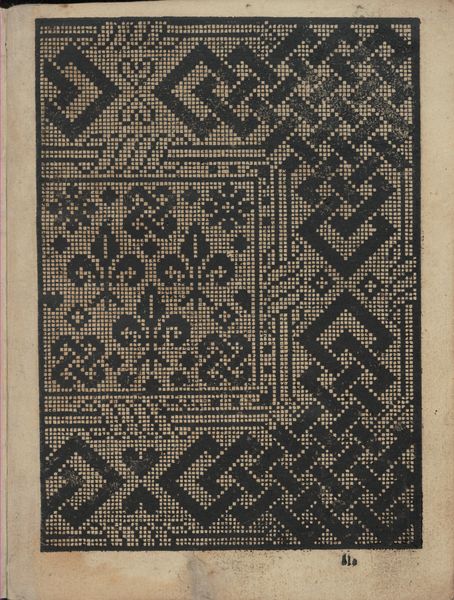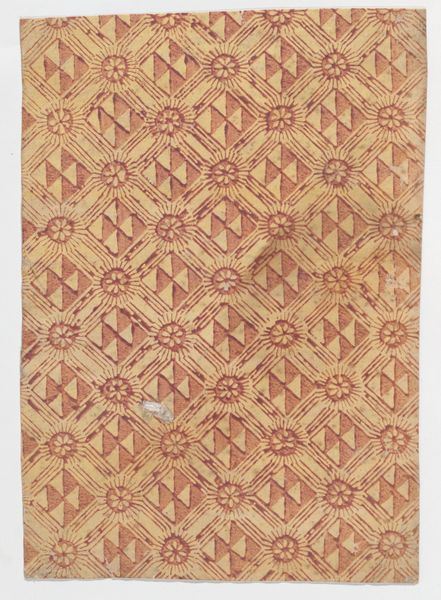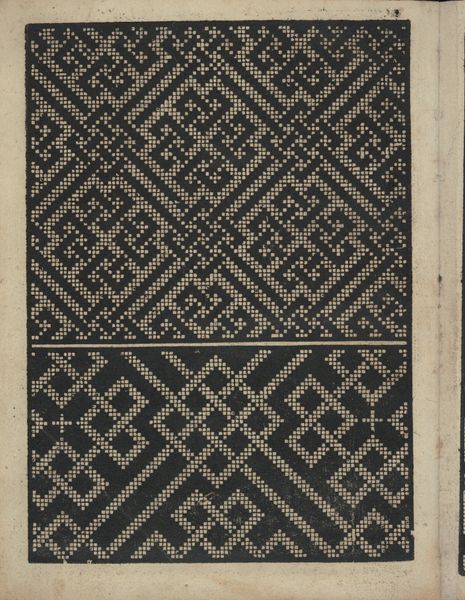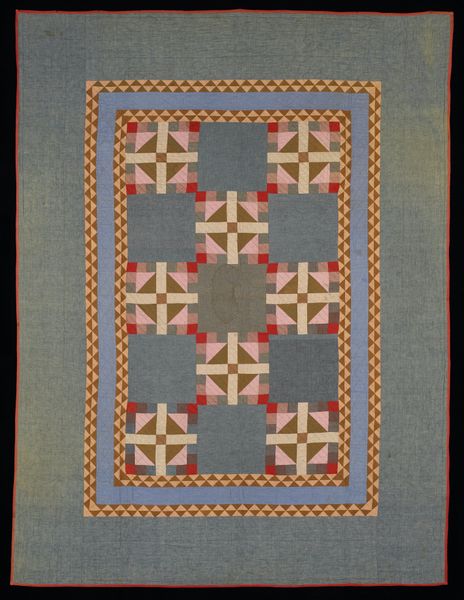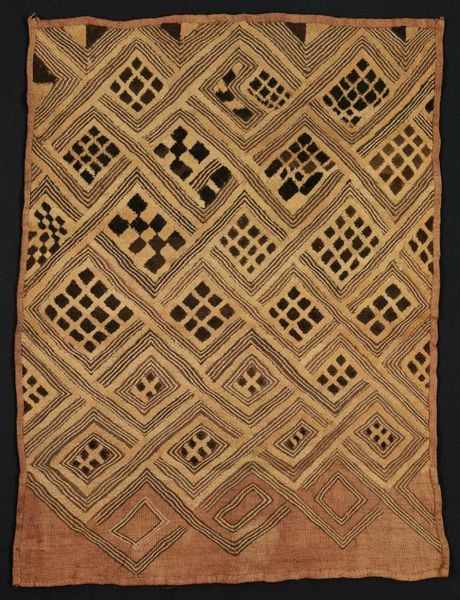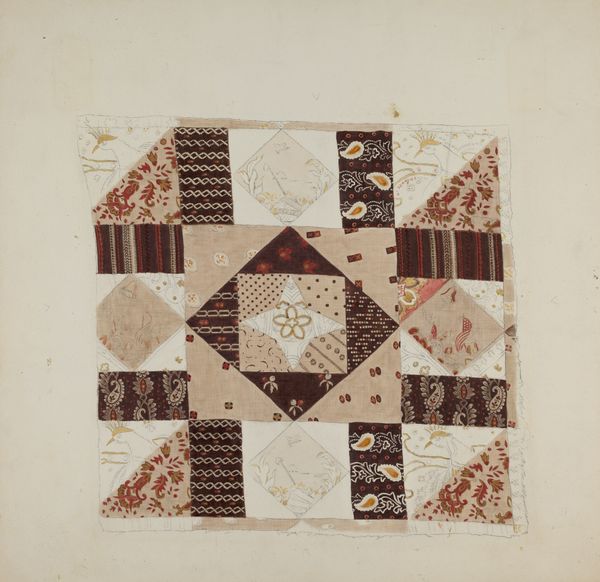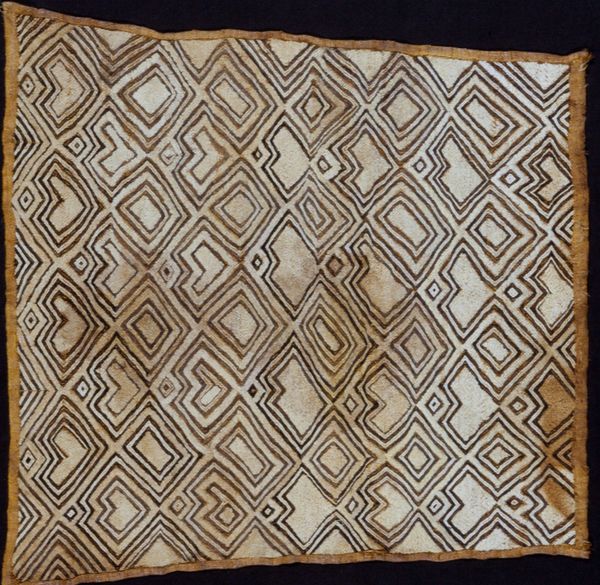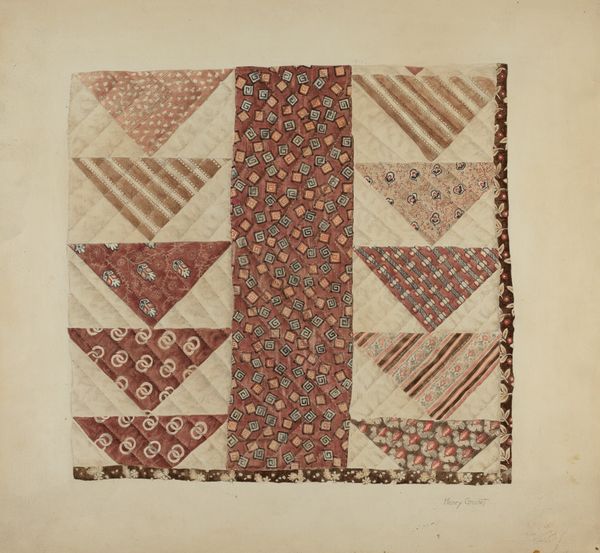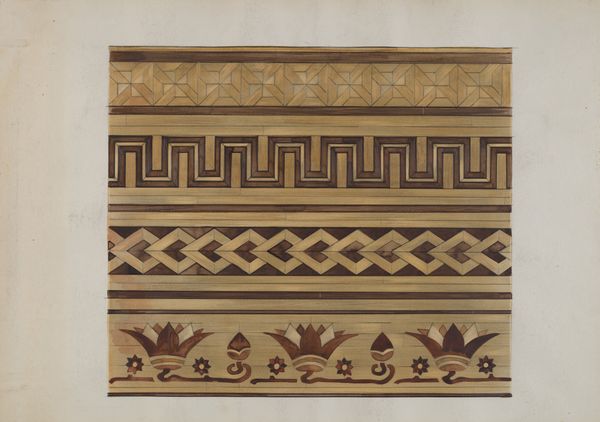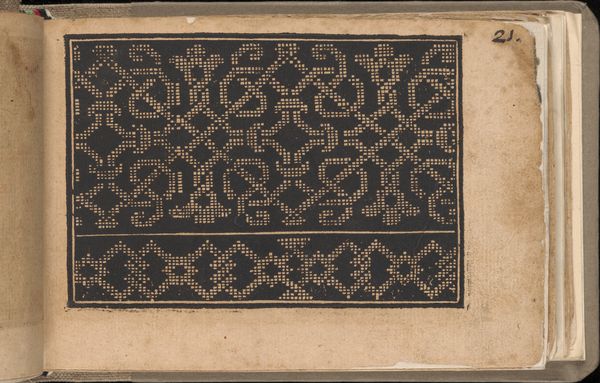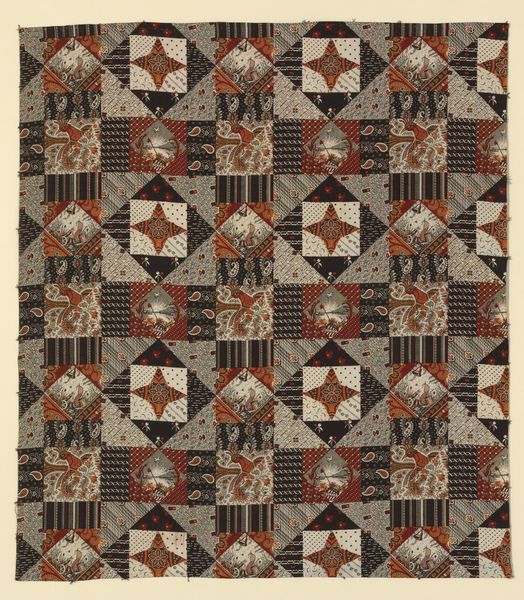
fibre-art, weaving, textile
#
african-art
#
natural stone pattern
#
fibre-art
#
naturalistic pattern
#
weaving
#
textile
#
geometric pattern
#
abstract pattern
#
organic pattern
#
geometric
#
repetition of pattern
#
vertical pattern
#
wooden texture
#
pattern repetition
#
layered pattern
Dimensions: 24 11/16 x 24 1/2 in. (62.71 x 62.23 cm)28 x 28 in. (71.12 x 71.12 cm) (mount)
Copyright: Public Domain
Curator: What catches my eye is how simultaneously chaotic and ordered it appears. It feels very intuitive, almost jazzy. Editor: I can see that. The "Panel" textile from the Kuba people, created around the mid-20th century, does exude a lively rhythm. What we're seeing is an example of fibre art, meticulously crafted with pigment on textile. The artwork is housed here at the Minneapolis Institute of Art, for those wanting to view it in person. Curator: It's really quite disarming, don't you think? The geometric patterns play tricks on the eye, as if there were several pieces trying to merge. Is there any intentionality to this, or do these panels reflect random inspiration? Editor: That's a layered question! Kuba textiles hold deep social and symbolic meanings, connected with status, rituals, and beliefs. Individual designs aren't usually random but passed down, learned, and subtly adapted by the artists. These "errors" can be read as acts of resistance against tradition and, simultaneously, evidence of an embrace thereof. The cloths played a central role in various life-cycle rituals, especially initiations and funerals. The patterns carry complex historical and cultural references, communicating visual narratives through their abstraction. Curator: So it's less about an aesthetic, more like writing with shapes, telling stories only those "initiated" into the Kuba traditions could fully decipher? I love how, even out of context, it holds onto this sense of layered narrative. It makes me think about palimpsests: hidden voices emerging from beneath other ones. Editor: Precisely! Kuba textiles existed outside a Western, commodified “art” context for much of their history, yet, today, the status of these panels shift as objects displayed in museums. In such institutions, they offer entry points to reflect on design, history, identity, and meaning. Curator: Museums transform objects and us too, the audience. Now, when I see it again, the textile breathes – it becomes an echo of its history, reverberating with unheard stories. It's mesmerizing! Editor: Yes. Its story—woven with intention and reinterpreted in our time—offers a potent lesson about cultural preservation and representation.
Comments
No comments
Be the first to comment and join the conversation on the ultimate creative platform.

